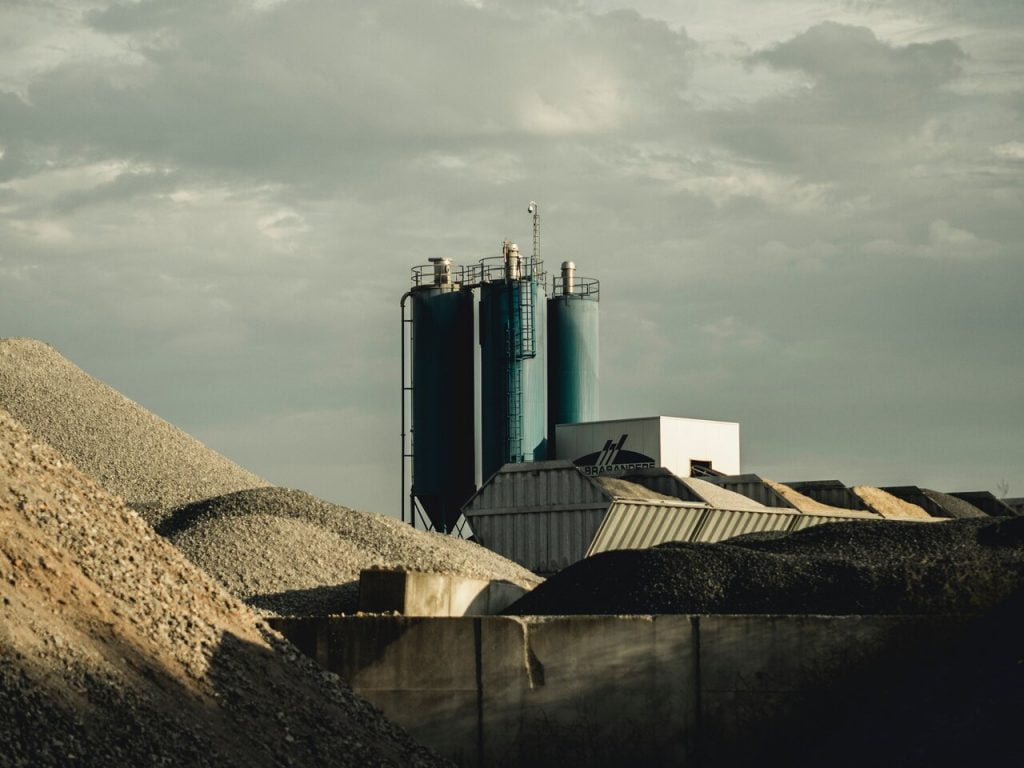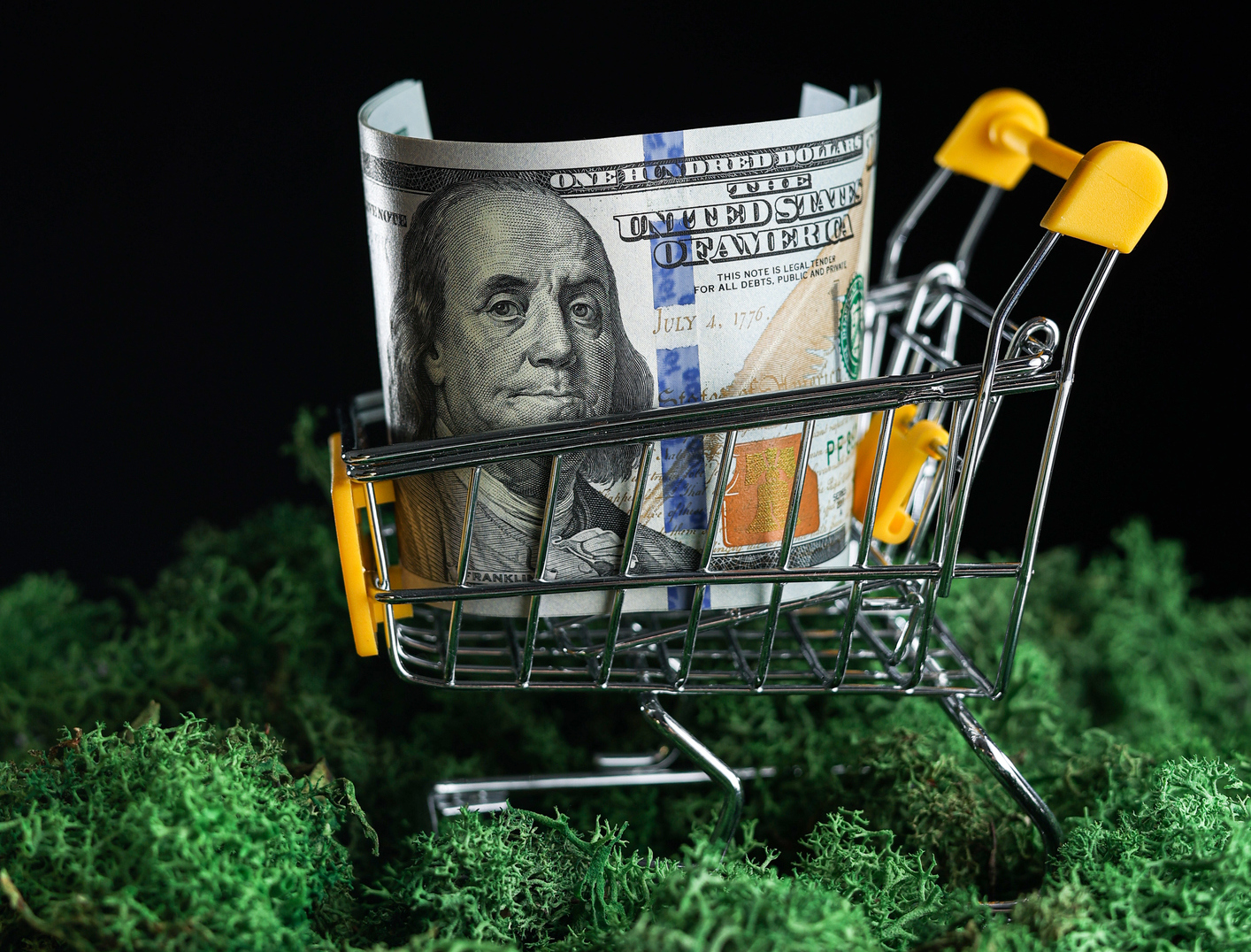It is not about the label
For most, the first touchpoint with CarbonCloud is the climate footprint label. But we do not spend our waking hours providing a climate change participation trophy. We want to generate real change in the food industry: Our reason for existence is to support decision-makers in the food industry in making climate-friendly food, to enable the insights that lead to informed actions. If CarbonCloud ever had a manifesto, this would be it: Our CEO, David Bryngelsson, unveils what can happen in the food industry behind the label – and beyond it.
There is an ongoing discussion and misguided criticisms towards climate labels built around the argument that labels don’t work, that labels will not solve the climate problem. This critique is a knock on an open door. No one taking climate change seriously thinks that labels will solve the problem, regardless of how pretty or rich in information they are. That is not why we help food producers climate-label their products.
Accountability and responsibility
To be clear, labels are not there to put the responsibility of solving the problem on the consumers. Consumers cannot solve sustainability issues, only producers can.
Climate change gets solved by innovation and thousands of business decisions; business decisions on product development, logistics partners, procurement for supplies (e.g. ingredients), energy contracts, etc. The same applies to any other industry setting out to solve climate change. The end-consumers cannot solve climate change for the transport industry if the industry does not supply zero-emission cars. The consumer cannot do anything about climate change and power, if the power suppliers do not offer climate-neutral electricity. Consumers can only do something about climate change and food, if the food producers supply relevant food products, aligned with our climate targets. Consumers can only react to what is already there.
Getting producers to solve the problem
Producers solve the climate problem when it aligns with their business goals, .i.e., earning money. They make sure to solve their part of the climate problem when it helps them grow or at the very least, sustain their business. To solve climate change, the cause needs to permeate most of the core business decisions the company takes, for decades. This is a strong commitment! To get to this priority level, top management needs to deem climate change performance as a central part of their revenue-generating machine in the company. Which conditions enable this?
Climate policy in almost any shape and form can produce this outcome, assuming a) the policy is rigorous enough to seriously affect company revenue or cost, and b) flexible enough to enable the company to find solutions and innovate. A climate tax, a cap-and-trade system, emission intensity requirements with a predictable tightening of levels are some examples of such policies.
Expected climate policy can have this effect. Most countries in the world have committed to solving climate change, but have not yet introduced rigorous climate policy – specifically not for the food sector. Companies in the food industry that want to be around for more than a decade into the future need to prepare for the upcoming climate policies. Not understanding their emission profiles is a large and unnecessary business risk. The lowest level of risk mitigation is to map out and measure emissions to get an estimate of how much a given climate policy may cost them if they proceed with business-as-usual. The strongest risk mitigation strategy is to proactively reduce emissions, get ahead of the competition, and avoid being affected by the climate policy when it gets implemented.
Consumer demand for climate-friendly products can also have this effect. Willingness to pay for products with better climate performance creates a market opportunity in proactively investing in emission reduction and selling on a premium market for climate-friendly products. This works both for business-to-business settings and business-to-consumer settings. In the last few years, there has been a rapid increase in demand for such climate-friendly products, driven by the end customers, and propagating through the value chain. As a result, food brands want to procure ingredients with smaller climate footprints in order to improve their own climate performance.

Expected climate policy and consumer demand have an additional drip-down effect on the access to capital for food brands. Food producers proactively reducing their emissions build trust in their longevity and attract more investments. Conversely, investors withdraw from high-emitting industries as their very future existence becomes shaky, with the fossil fuel industry being the first example of that, and the food industry following strong.
Newsletter to-go?
Our special today is our Newsletter, including snackable tips, hearty climate knowledge, and digestible industry news delivered to your inbox
Are policy, the expectation for it, and demand always necessary for a business to solve sustainability issues?
More or less. Small measures that do not really affect the producer’s core business may be done anyways without any of these drivers. A consultancy may, for example, work on climate change, because they do not have any emissions related to their core business and don’t have to change anything fundamental; all they have to do is pay a little bit more for their electricity and their transports. They may also have policies for every other of the UN sustainability goals, as do most companies. What about a company with a large climate footprint associated with their core business? If none of these three drivers is present, the company is called to increase the cost of production in a competitive landscape. Such a decision would impact their financial performance to an extent likely to put them out of business. This is an existing, great disincentive to take serious climate action.
Beyond incentives
If the incentive is there, the food producer sees a business-critical reason to start working on climate change. What happens next? They need to find a process to map out their production processes to understand which processes and suppliers cause their emissions. Once they have this information, they can start developing a plan for what to do to get from insight to action and, over time, lower their emissions.
A concrete road forward
When we founded CarbonCloud, our wish was –and is– to provide the tools and information the food industry decision-makers need to get clear insights, and to plan and coordinate their action. CarbonCloud is a platform aimed to enable food producers, who are not experts on climate science, to quickly and easily assess and quantify the climate footprints of their production processes and products, with explicit emission profiles and hotspot identification. The users of the platform rapidly identify which processes require more data and which production steps are crucial to reducing their climate footprints over time.
The platform is there to help these producers become climate experts on their specific products, help them develop more, and more climate-friendly products, procure climate-efficient ingredients, and plan their climate strategy. It is a platform for insight and for action. The platform puts the most up-to-date science and data in the hands of the producers and is built around supply chain optimization. All processes and products are measured using the same yardstick, to ensure that business decisions are based on the best possible information.

So why do we encourage labeling so strongly to our customers?
Is there any point in working actively with labeling if it does not solve the underlying problem? Yes, there is, for several reasons.
Transparency
The main reason we encourage labels is to create a trustworthy information channel from food producers to their consumers, where they can transparently communicate that they work on climate change as well as their progress. The labels are not only participation trophies but quantitative values to facilitate transparency in how well food producers perform. These quantifiable values hold producers accountable and enable consumers to navigate between products on that same ground: Which producer puts little effort into the issue and who is making major investments. The added value of the labels is that food producers leverage the consumer demand for climate-friendly products with a transparent and reliable communication channel; with information that makes a distinction between greenwashing and the real thing accessible to consumers.
In some industries, a consumer can easily tell which product or service solves the climate problem. It is obvious that an electric car does not run on fossil fuels, no further evidence is needed. Unfortunately, food does not work like that and that creates a need for a dedicated, transparent, and trustworthy channel of information. Our labels accompanied by web reports fill that function.
Transparency is followed by accountability. When the company claims to improve or be best-in-class, they need to back it up with data on the consumer-facing front. They can only look the best by being the best. Their consumers can start demanding further improvement and tell when it is delivered.
The labels and the end consumers do, however, play a role to help provide commercial incentives to this value chain by favoring and potentially paying a premium for climate efficient products. Still, putting labels on products does not immediately make a food brand transparent. For transparency to work, these incentives must ripple through the value chain to the players that really can make a difference for the end-product.
The information on the labels needs to be based on open, traceable, and compatible data across the value chain. 85-95% of the climate footprint and consequentially the actions needed to happen for a climate-friendly food industry to become a reality, will need to happen at the supplier level. The value chain is often divided into several steps between agriculture, traders, refiners, etc. This has a serious implication on food brands: 85-95% of the transparency and trust needed going forward has nothing to do with labels and the end-consumer; it lies between business partners in the complex supply chain of the food industry. This is where CarbonCloud provides a unique solution. The labels you see indicate that this process is ongoing.

Commitment
The labels also work to create strong anchoring within the organization. A food brand that decides to put climate labels on their products not only tells their consumers that they work on climate change; they also tell their employees that they are an organization that define themselves as forward-leaning and leading the way towards the future. They show that climate performance improvements will be prioritized in future business decisions. When done right, this permeates the culture of the company and it becomes part of their identity; they start focusing on solutions rather than the problem. They commit to climate change now being part of their revenue machine.
Virality and norm change
A company that builds transparent climate performance into their brand with climate labels tells their competitors and the rest of the industry that solving climate change is consistent with running and growing a business in the food sector. This creates changes in norms and influences other brands to follow suit. Consumers play a part in this development, as they increasingly demand climate footprint information in the name of transparency, similar to nutritional information and comparable prices.
Policy
Politicians usually introduce policies when they perceive that they will get support from the public and the industry. Climate labels on products tell policymakers that the industry takes climate change seriously and that there are companies already committing to a zero-emissions trajectory. This paves the way for the policies needed to get all the not-so-forward-thinking companies to realize that climate change must be taken seriously. Of course, whenever these policies get implemented, the companies that have already let climate change influence their business decisions for years, will get a strong competitive advantage over those that are late to the game.
In summary, it is not about the labels – not at all, but the labels play a part in getting us to what it is all about – a climate strategy taken seriously by the food producers. Food consumers need to take climate change seriously if we are to solve the climate crisis. We cannot underestimate the impact of momentum-creating activities that lead the way for the industry. These activities are showing competitors, consumers, and policymakers that we can do something about the climate crisis – it is just a matter of political will and calmly taking each individual step along the way.
Related Posts
Sustainability claims: A 56% growth opportunity for food producers and retailers
Attributing sustainability claims to sales growth has been a year-long quest with loose results for the food industry. A new market report puts the quest to rest, providing 5-year-long evidence that s
🇺🇸 FTC Green Guides: From theory to practice
While the publication of the UK’s Green Claims Code has made some noise in the industry, the Green Guides from the US Federal Trade Commission (FTC) have been around quietly and humbly since 1992. O
Asking for a friend: What does the climate footprint label mean?
You have labeled your product and your friend /customer /marketing manager tells you: This is such a great initiative! But… what does the climate footprint label mean? What is CO2e? And, how d
Little Freddie: A climate footprint growth spurt
Think of an adult foodie brand and 100 come to mind. Now think of a baby foodie brand – is it taking longer? We hand you the answer: It’s Little Freddie! When it comes to baby food, they believe o







